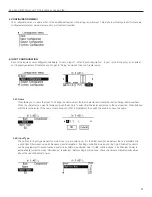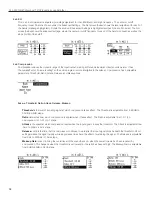
PLA DL210NET Digi-Loop™ DSP Induction Loop Amplifier
5
and cart combination should be moved with care. Quick stops, excessive force and uneven surfaces may cause the appliance and cart
combination to overturn.
16. Wall or ceiling Mounting - The appliance should be mounted to a wall or ceiling only as recommended by the manufacturer.
17. Power Sources - The appliance should be connected to a power supply only of the type described in the operating instructions or
as marked on the appliance.
18. Object and Liquid Entry - Care should be taken so that objects do not fall and liquids are not spilled into the enclosure through the
openings.
19. Servicing - The user should not attempt to service the appliance beyond that described in the operating instructions. All other
servicing should be referred to qualified service personnel.
Precautions:
1. Power – WARNING, BEFORE TURNING ON THE POWER FOR THE FIRST TIME, READ THE FOLLOWING SECTION
CAREFULLY. The amplifier is designed for use only with the line cord of the region in which it will be operated.
2. Voltage Label (Rear Panel) – A label located at the rear panel power connection indicates the AC power input for the unit. The label
will read 100-240V AC 50-60Hz 210W Auto-switching.
3. Do Not Plug in the input, output, ethernet, USB or RS-232 connections while the power switch is switched to the “ON” position.
4. Do Not Touch the PLA DL210NET with wet hands. Do not handle the PLA DL210NET or power cord when your hands are wet
or damp. If water or any other liquid enters the PLA DL210NET cabinet, take the PLA DL210NET to qualified service personnel for
inspection.
5. Place the PLA DL210NET in a well, ventilated location. Take special care to provide plenty of ventilation on all sides of the PLA
DL210NET especially when it is placed in an audio rack. If ventilation is blocked, the PLA DL210NET may over heat and malfunction.
Do not expose the PLA DL210NET to direct sun light or heating units as the PLA DL210NET internal components temperature may
rise and shorten the life of the components. Avoid damp and dusty places.
6. Care – From time to time you should wipe off the front and side panels and the cabinet with a soft cloth. Do not use rough material,
thinners, alcohol or other chemical solvents or cloths since this may damage the finish or remove the panel lettering.






































